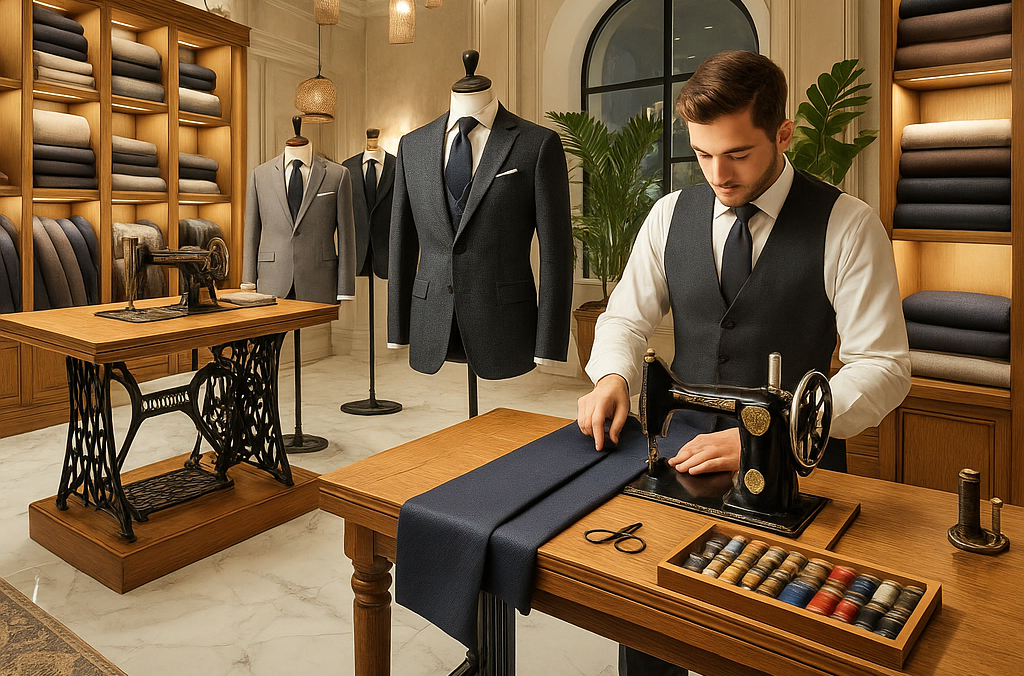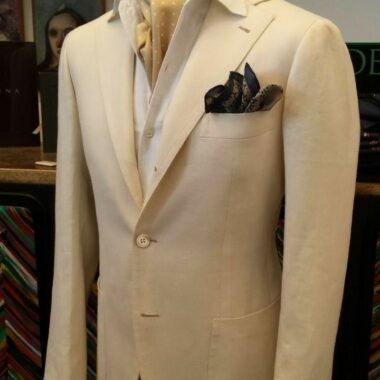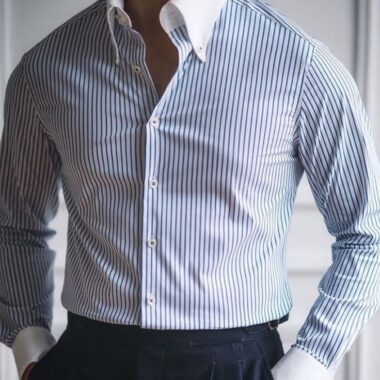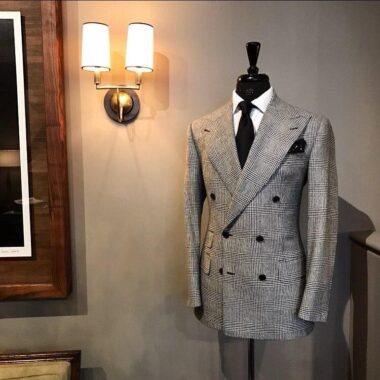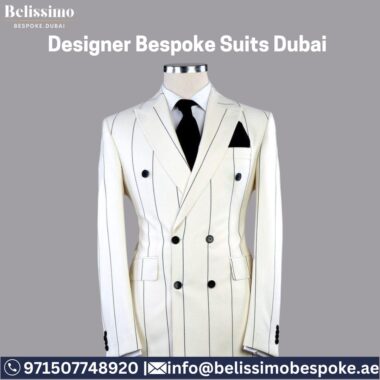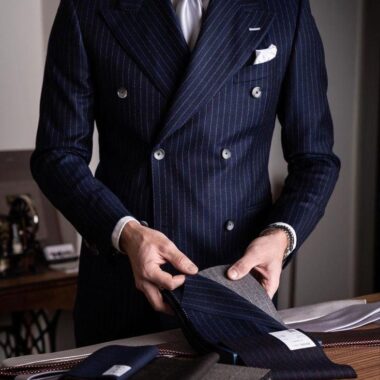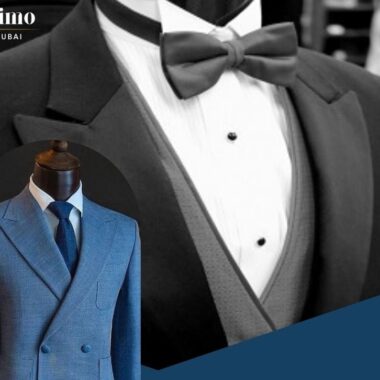When it comes to style, handmade suits are the best. From the office room to weddings and every occasion in between, a suit made to your exact measurements instantly changes your presence and confidence. Men’s tailoring is a confusing topic, and choosing a bespoke design can feel like the best of the best. What fabrics should you choose? How should a suit fit? What details matter most?
At Belissimo Bespoke, we believe every man deserves a good product. The design must be good, and the work must be done with a lot of experience. This blog will discuss the details of the design and the elements one can choose for their best match.
Why Men’s Tailoring Matters
In this time of ready-made suits, the art of men’s tailoring is the best way to maintain quality and individuality. A tailored suit doesn’t just fit your body; it showcases your personality, lifestyle, and every single detail.
A good tailor will take the details of your posture, sizes, and style details. The result is a suit that feels like a second skin. This is comfortable, favourable, and the best. Investing in men’s tailoring isn’t just about looking good today; it’s about building a fashion sense that lasts for years.
Ready-made vs. Made-to-Measure vs. Bespoke
Before we get into the details of fit, fabric, and finish, it’s best to understand the three main categories of suits:
- Ready-made suits: These suits are hand-made in standard sizes. They can look good with small design changes but sometimes lack the single details and personality of true tailoring.
- Made-to-Measure: These suits start from a standard pattern that’s adjusted to your measurements. They offer a good balance of customisation and affordability but have some limitations in fit and style.
- Bespoke: The height of men’s tailoring, bespoke suits are designed from the bottom to your unique measurements and style details. Every detail from collar width to lining fabric is chosen by you, guided by the tailor’s help.
The Importance of Fit
Fit is king. Even the most expensive fabric can’t save a poorly fitted suit. In men’s tailoring, the goal is to get a clean, good design that changes your natural body shape.
Here are the main areas of fit to keep in mind:
1. Jacket Fit
In this type:
- Shoulders: The shoulders are the foundation of a suit jacket. The seam should end where your natural shoulder ends — not before, not after.
- Chest and Waist: A well-fitted jacket should gently hug your torso without pulling or gaping when buttoned. You should be able to slip a hand between your chest and the jacket comfortably.
- Sleeves: The sleeves should show about a quarter to half an inch of your shirt cuff when your arms are at your sides.
- Length: The jacket should cover your seat and end around the knuckles of your thumb when your arms hang naturally.
2. Trousers Fit
In trouser fit:
- Waist: Your trousers should sit comfortably at your natural waist without needing a belt to hold them up.
- Seat: The back should lie smoothly without sagging or pulling tight.
- Legs: Whether you prefer a slim, straight, or more relaxed cut, the trousers should allow easy movement and maintain clean lines.
- Break: The trouser break (where the hem meets your shoes) is a matter of personal taste, but a slight break is classic and versatile.
A bespoke shirt should fit snugly around your neck without feeling tight, with sleeves that reach your wrist bone and enough room to move comfortably. If you opt for a waistcoat, it should sit flat against your shirt without any gaps or pulling.
Choosing the Right Fabrics
Fabric is the soul of a suit. In men’s tailoring, the fabric you choose determines not only the suit’s look but also its feel, drape, and durability.
Here’s what you need to know about fabrics:
1. Wool: The Gold Standard
Wool is the most popular fabric for men’s tailoring — and for good reason. It’s versatile, breathable, and available in countless weights and weaves. Wool suits can be worn year-round and offer excellent comfort and longevity.
Popular wool options include:
- Merino Wool: Fine and soft, perfect for elegant business suits.
- Flannel: Heavier and warmer, great for colder climates.
- Tweed: Textured and rugged, ideal for country-inspired styles.
2. Cotton and Linen: Light & Breezy
For warmer weather, cotton and linen are popular choices:
- Cotton: Lightweight and breathable, but tends to wrinkle more than wool.
- Linen: The epitome of summer suiting — airy and cool, with a natural, relaxed drape.
3. Blends: Best of Both Worlds
Many suits use fabric blends to combine the strengths of different materials. Wool-silk blends, for example, add a luxurious sheen, while wool-polyester blends can increase durability at a lower cost.
4. Patterns & Colours
Classic colours like navy, charcoal, and grey are timeless and versatile. For more personality, consider patterns like pinstripes, checks, or subtle plaids. Just remember: bolder patterns may stand out more, so think about where you’ll wear the suit.
Why Choose Belissimo Bespoke for Men’s Tailoring?
A well-tailored suit is more than just clothing — it’s a reflection of your style, confidence, and success. By understanding the fundamentals of fit, fabrics, and finish, you can make informed choices that elevate your wardrobe for any occasion.
Ready to start your journey into men’s tailoring? Visit Belissimo Bespoke and discover how our bespoke suits can transform the way you look and feel. Our expert tailors are here to help you create a garment that’s uniquely yours, down to the very last stitch.

